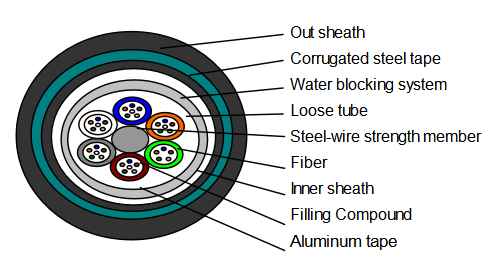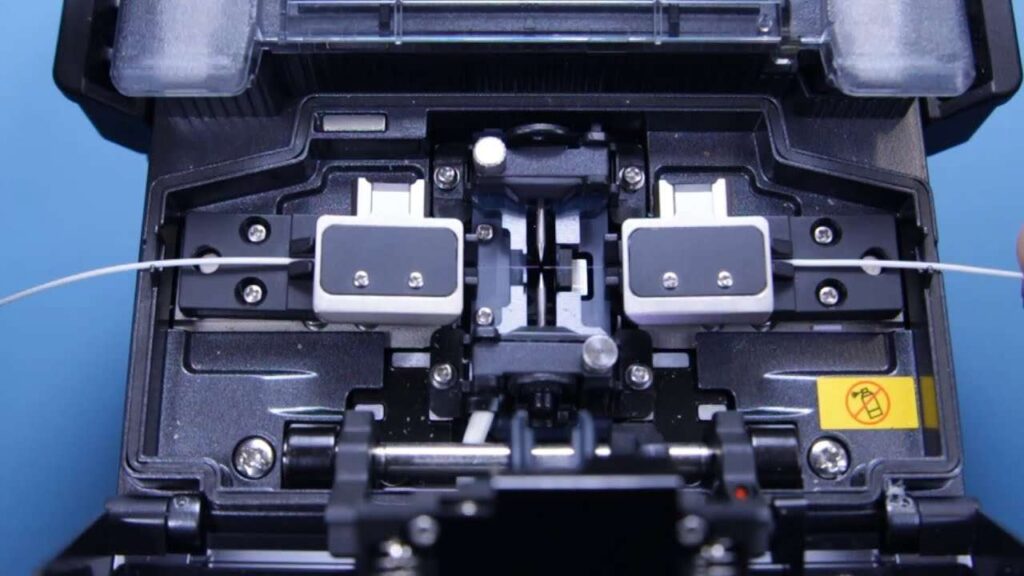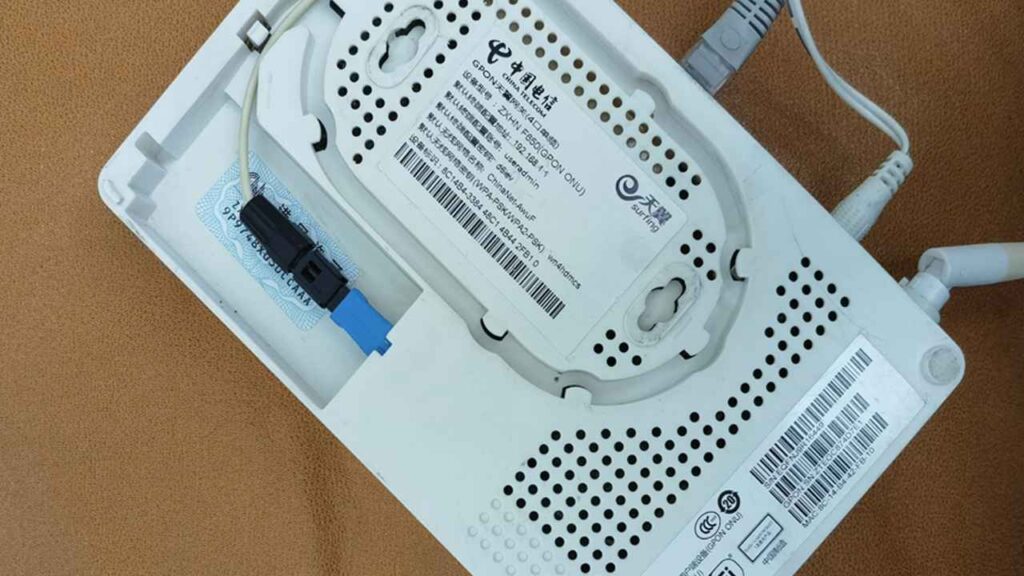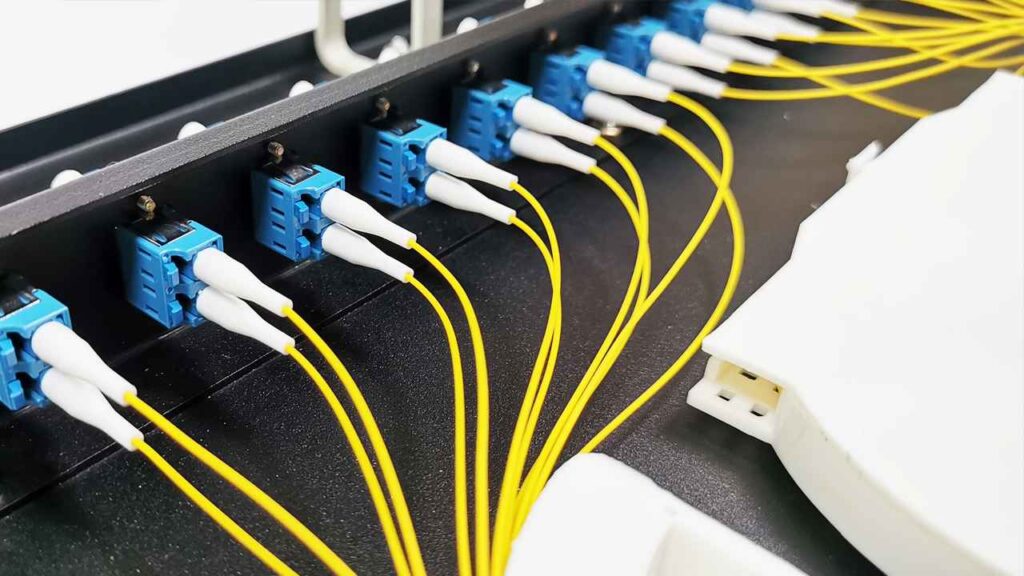Optical fiber cable is a type of communication cable. It uses one or more optical fibers in a protective covering to transmit information. We can use optical fiber cables alone or in groups to meet specific performance requirements.
Fiber cables are mainly composed of optical fibers (glass fibers as thin as hair), plastic protective sleeves, and plastic sheath. There are no metals such as gold, silver, copper, aluminum, etc. inside the cable, and it generally has no recycling value.
Basic Structure
The basic structure of cable is generally composed of cable cores, reinforced steel wires, fillers, and sheaths, as well as components such as waterproof layers, buffer layers, and insulated metal wires as needed.

Fiber Optic Cable Types

1. According to different transmission performance, distance, and purpose, optical fiber cables can be divided into end user fiber cable, local telephone cable, long distance cable, and underwater fiber optic cable.
2. According to the types of optical fibers used, they can be divided into single mode fiber optic cable and multimode fiber optic cable.
3. According to the number of fiber cores inside, it can be divided into single core optical cable, dual core fiber cable, multi-fiber cable, etc.
4. According to the different configuration methods of reinforcement components, optical cables can be divided into central reinforcement optical cables, dispersed reinforcement optical cables, protective layer reinforcement optical cables, and comprehensive outer protective layer optical cables.
5. According to the different transmission conductor and medium conditions, optical cables can be divided into non-metallic fiber cable, ordinary optical cables, and comprehensive optical cables (mainly used for railway dedicated network communication lines).
6. According to different laying methods, optical cables can be divided into pipeline optical cables, underground fiber optic cable (direct burial fiber optic cable), aerial fiber optic cable, and submarine fiber optic cable
According to different structural methods, optical cables can be divided into flat fiber optic cable, twisted fiber optic cable, skeleton optical cable, armored fiber optic cable, and high-density user fiber cable.
Optical Fiber Cables Limit
The Optical Fiber cables are mainly limited by two indicators: allowable tensile strength and flattening forces. Details see below table 1:
| Cable type | Allowable tensile (N) | Allowable tensile (N) | Allowable flattening forces (N/100mm) | Allowable flattening forces (N/100mm) | ||
| Short term | Long term | Short term | Long term | |||
| Duct, non self-supporting aerial fiber optic cable | 1500 | 600 | 1000 | 300 | ||
| underground fiber optic cable | 3000 | 1000 | 3000 | 1000 | ||
| Special direct burial fiber optic cable | 10000 | 4000 | 5000 | 3000 | ||
| undersea fiber optic cable (20000N) | 20000 | 10000 | 5000 | 3000 | ||
| submarine fiber optic cable(40000N) | 40000 | 20000 | 8000 | 5000 | ||
Pre Terminated Fiber Cable Methods
There are many types of fiber connectors which can be connected with f.o. cable, including: SC LC FC ST E2000 MTRJ MU MPO LX.5, etc.



The main methods include permanent connections, emergency connections, and active connections.
1. Permanent fiber optic connection (also known as fiber optic splicing)
This connection involves melting and connecting the connection points of two optical fibers together using a discharge method. Generally used for long distance connections, permanent or semi permanent fixed connections. Its main feature is that the connection attenuation is the lowest among all connection methods, with typical values ranging from 0.01 to 0.03dB/point. But when connecting, special equipment (splicing machine) and professional personnel are required for operation, and the connection point also needs to be protected by a special container.

2. Emergency connection (also known as cold melt, related product will be mechanical connector or fast connector)

Emergency connection mainly involves using mechanical and chemical methods to fix and bond two optical fibers together. The main feature of this method is that the connection is fast and reliable, with a typical attenuation of 0.1-0.3dB/point. However, long-term use of the connection point will be unstable, and the attenuation will also significantly increase, so it can only be urgently needed in a short period of time.

3. Activity Connection
Active connection is to use various fiber optic connection devices (plugs and sockets) to connect stations to stations or stations to optic fiber cable. This method is flexible, simple, convenient, and reliable, and is commonly used in computer network wiring within buildings. Its typical attenuation is 1dB/joint.

How To Choose Optical Fiber Cable?
Except fiber count and fiber types, we should consider the external sheath of the cable according to its usage environment when we choose which kind of the optic fiber cable.
1. If directly burying outdoor, armored optic fiber cable should be selected such as GYTS GYTA GYXTW, etc. When overhead, a black plastic outer sheath with two or more reinforcing ribs can be used, such as self-supporting drop cable, figure-8 cable, etc.
2. If used in buildings, should care the flame retardant, toxicity, and smoke characteristics. Generally, flame retardant but smokeless types (Plenum) can be selected in pipelines or forced ventilation areas, while flame-retardant, non-toxic, and smokeless types (Riser) should be selected in exposed environments.
3. If vertically laying cables inside the building, distribution cable can be used; If deploying horizontally, breakout cables can be selected.
If the transmission distance is within 2km, multimode fiber can be selected. If the distance exceeds 2km, relay or single mode fiber can be used.
Below are standard for buried depth of directly buried fiber optic cable for your reference:
| Laying location or soil quality | Buried depth (m) | Remark |
| Ordinary soil (hard soil) | ≥1.2 | |
| Semi stone (gravel soil, weathered stone) | ≥1.0 | |
| Hololithic | ≥0.8 | Add 10cm of fine soil or sand from the bottom of the ditch |
| Quicksand | ≥0.8 | |
| Suburbs, villages and towns | ≥1.2 | |
| City sidewalks | ≥1.0 | |
| Crossing railways and highways | ≥1.2 | Distance from the bottom of the ballast or from the road surface |
| Gully, canal, pond | ≥1.2 | |
| Agricultural drainage ditch | ≥0.8 |

